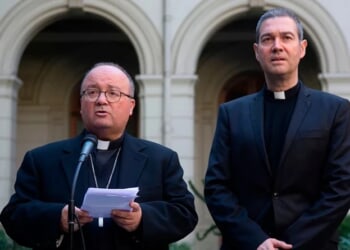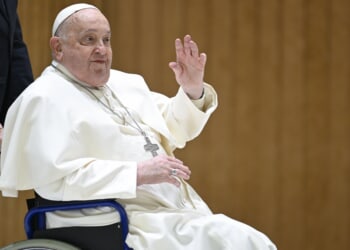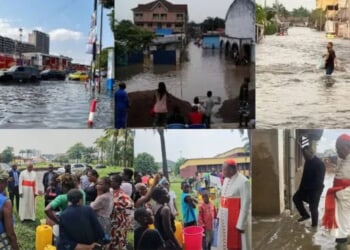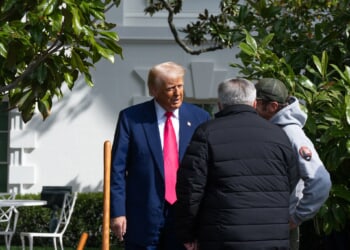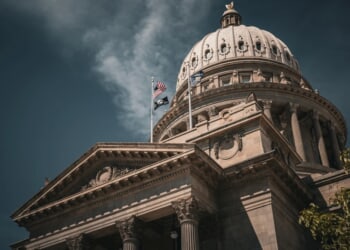Washington, D.C. Newsroom, Apr 22, 2025 /
11:12 am
The start of a papal interregnum brings many terms that may not be familiar to many people, including many Catholics. Here are some of the key words and phrases that will be used throughout the interregnum, especially the conclave to elect the new pope.
Apostolic See or Holy See: The earthly heart of the Church is often referred to as the Apostolic See or Holy See. A see is a seat of authority, from the Latin “sede” for “chair.” Jesus said the Pharisees sat on the chair of Moses. Judges sit on a bench, representing the authority of the state. Professors hold chairs of academic authority. And in the Church bishops possess chairs of spiritual authority, which is why in part their dioceses are called sees. The Roman Diocese has been called the Apostolic See, or Holy See, from ancient times, as it is the seat of authority of the chief apostle Peter, who has Christ’s authority over holy things. The expression applies not only to the pope but also to those in Rome who assist him in governing the universal Church.
camerlengo: The camerlengo, or chamberlain, of the holy Roman Church has the key role of organizing the process during the vacancy of the Apostolic See, the interregnum. It is the camerlengo, assisted by the master of papal liturgical celebrations and other officials who certify the death of the pope. During the period of vacancy the camerlengo, assisted by the vice camerlengo, gathers reports from the departments of the Curia so that the College of Cardinals can manage the ordinary affairs of the Holy See until a new pope is elected. This is necessary since virtually all department heads lose their offices when a pope dies, except for the camerlengo, the major penitentiary, and the almoner of his holiness.
cardinal: As the root of the name suggests — Latin for “cardo,” or “hinge” — cardinals are among the closest advisers of the pope and have the immense responsibility of electing the bishop of Rome, the pope, in a conclave. The ecclesiastical rank of cardinal was known from about A.D. 315 and the time of Pope Sylvester I. Today these titles, with their reference to ancient responsibilities as being among the clergy of Rome, are said to be “titular,” not actual. The actual offices held by cardinals today are instead within the Roman Curia or as archbishops of dioceses around the world. Cardinals are generally bishops, though the pope may grant an exception, as has been done on several occasions in recent decades. By custom, cardinals are called princes of the Church, with the title of eminence, and enjoy special privileges such as wearing scarlet, a reminder that they are expected also to be witnesses of the faith “usque ad sanguinis effusionem” (“even to the shedding of their blood”).
cardinal electors: Cardinal electors are those who are eligible to vote in a papal election. All cardinals under the age of 80 on the day on which the Roman See becomes vacant are allowed to participate in the conclave. The exceptions are those who are legitimately prevented by illness or other circumstances, those who have been deposed by the pope, and those from whom the pope has accepted the renunciation of the cardinalate. For most of the history of papal elections there was no age limit on the cardinals to take part in a conclave. However, in 1970 the age requirement of 80 was imposed by Pope Paul VI. He decreed that cardinals turning 80 should cease to be members of the departments of the Roman Curia and of the other institutions and lose the right to elect the pope. If, however, a cardinal completes his 80th year after the Apostolic See becomes vacant, he remains an elector for the conclave. Electors who have been legitimately delayed or who leave for a reason recognized in law may enter, or reenter, the conclave even while it is in progress. Every pope since 1378 has been chosen from among the body of voting cardinals.
College of Cardinals: The collective name given to the body of cardinals, known formally as the Sacred College of Cardinals. This group consists of bishops, and by exception priests, whom a pope has chosen to be his close advisers and collaborators — and to whom he has entrusted the task of electing his successor — are called cardinals. The name derives from the Latin for “hinge” and came into use in the fourth century. The College of Cardinals, or all cardinals collectively, was constituted in its current form in A.D. 1150, although the cardinals have served as the exclusive electors of the pope since 1059. Members belong to one of three ranks, cardinal deacons, cardinal priests, and cardinal bishops.
consistory or congregation: A gathering of cardinals to advise the pope or assist him in his duties. During the vacancy of the Apostolic See there are three kinds of assemblies of the cardinals. General congregations are attended by all the cardinals who are not legitimately impeded, such as by sickness. Particular congregations are composed of the cardinal chamberlain (camerlengo) and three other cardinals. These particular congregations handle the ordinary business of the Roman Church during the interregnum, referring anything significant to the general congregation. Finally, once the cardinal electors gather to elect a pope, their assembly is called a conclave.
conclave: When the cardinal electors gather to elect a pope their assembly is called a conclave. The name is derived from the Latin for ”cum clavis” (”with a key”), describing the symbolic but historical procedure by which the cardinal electors are locked into the place of election until their task of electing a new pope is finished. The conclave system was formalized in 1274 by Pope Gregory X in the bull Ubi Periculum. It sought to prevent another lengthy interregnum such as the three-year-long ordeal that had preceded his election in 1271. Its procedures are minutely governed today by the apostolic constitution Universi Dominici Gregis of Pope John Paul II, as amended by Pope Benedict XVI and Pope Francis, and allows for no innovations on the part of the cardinals. By tradition and law, it is held in the Sistine Chapel, and votes are taken once or twice in a morning session and once or twice in an afternoon session. When the session concludes without an election the ballots are burned, causing black smoke to emanate from the chimney of the Sistine Chapel. However, if a pope is elected they are burned with a chemical agent, producing the characteristic white smoke signaling the election of a pope.
dean of the College of Cardinals: The most senior member of the College of Cardinals, elected from among the ranks of the cardinal bishops, and confirmed by the pope. The dean is assisted by the vice dean in convoking the cardinals when the pope dies, as well as presiding over their congregations and over the conclave. He is the one who asks the electee to accept election as pope. The dean always has the titular office of the bishop of Ostia, the diocese located at the mouth of the River Tiber, on whose banks Rome sits. The cardinal dean also holds the title he held at the time of his promotion to dean. If the dean is over the age of 80 and therefore ineligible to participate in the conclave, his duties are performed by the vice dean. If he, too, is over 80, the task of running the conclave falls to the most senior cardinal bishop under the age of 80. In the current conclave, both the dean (Cardinal Giovanni Battista Re, age 91) and vice dean (Cardinal Leonardo Sandri, age 81) are ineligible, and so the conclave will be directed by Cardinal Pietro Parolin, the next eligible most senior cardinal bishop.
dicastery: A dicastery is a department of the Roman Curia whose mission is to assist the pope in his governance of the Church. Among them are the Secretariat of State, the various one-time congregations, such as the Doctrine of the Faith; the tribunals, such as the Apostolic Signatura; the councils, such as for Promoting Christian Unity; and the offices, such as the Camerlengo (which administers the goods of the Holy See during a vacancy). Major dicasteries are traditionally headed by a cardinal, but Pope Francis has also named a woman religious as a prefect as well. Dicasteries are composed of a body of cardinals and bishops who meet periodically to conduct the more important business, assisted by other officials, consultors, and employees, both clergy and laity.
Domus Sancta Marthae: Called in the Italian the Casa Santa Marta, or St. Martha’s House, the Vatican guesthouse used to welcome various visitors with business in the Vatican and especially to house the cardinals during the conclave. Prior to the conclave that elected Pope Benedict XVI in 2005, the cardinal electors stayed in cramped quarters quickly prepared in the Apostolic Palace near the Sistine Chapel. With the increase in the number of electors in recent decades, this arrangement proved inadequate. Pope John Paul II ordered the construction of the Domus Sancta Marthae, named for the holy woman of Bethany, St. Martha, who busied herself with hospitality for the Lord. In 2005 and 2013, the Domus housed both the nonvoting cardinals before the election and the voting cardinals (those under 80 years of age) once the election began. It also served as the residence of Pope Francis from the time of his election in 2013.
electing a pope: The manner of choosing a pope is not of divine institution. Papal authority is supreme in the Church, so whatever procedure a pope establishes for the election of his successor is lawful, valid, and obligatory until another pope changes it. Christ personally chose Peter, and it is believed that Peter himself designated his successor as Linus. How other of the early popes were elected, by vote or designation, is not known with certainty. However, from the fourth century we see the evolution of procedures culminating in the 11th and 12th centuries in the current system of cardinal electors. The current conclave system of electing a pope was introduced in 1274 by Pope Gregory X. This system has itself been reformed by many popes, including John Paul II, and on some points by Pope Benedict XVI and Pope Francis.
interregnum: The period between the reigns of popes, formally called the vacancy of the Apostolic See, or “sede vacante.” A vacancy may come about due to the death of a reigning pope or to his resignation from office. If a pope has died the cardinals gather in Rome to mourn him and to plan and carry out his funeral and burial. In both the case of death and resignation, they will meet in conclave to elect his successor. During a vacancy, except for certain offices necessary for day-to-day affairs, all department heads in the Roman Curia lose their authority, and the power of the cardinals is limited to those matters concerned with guarding the authority and patrimony of the Holy See for the next pope.
major penitentiary: The major penitentiary is one of the curial officials who do not lose their offices with the vacancy of the Holy See. The others are the camerlengo or chamberlain of the holy Roman Church and the almoner of his holiness. The major penitentiary is responsible for indulgences, the provision of confessors for the patriarchal basilicas in Rome, and judging questions of conscience (called the internal forum) submitted for adjudication to the Holy See. These include dispensations and absolution from sanctions, such as excommunication, which are reserved in law to the Holy See. The authority of the major penitentiary, therefore, continues during the interregnum.
Novendiales: Following the death of the pope nine days of official mourning are held, called the Novendiales, meaning nine days. The nine days of official mourning, commencing with the day of the solemn funeral Mass, are called the Novendiales. This funeral Mass, and Day 1 of the Novendiales, must fall between the fourth and sixth day after death, that is, on the fifth, sixth, or seventh day of the interregnum, as determined by the College of Cardinals. The mourning period then continues until the nine days are completed. Typically, a Mass is celebrated by a cardinal and might involve officials and staff from different Vatican offices, such as the Vatican City State, the Roman Curia, members of Consecrated Life, and the Eastern Churches.
papal primacy: Papal primacy refers to the supreme, immediate, and ordinary authority of the pope over everyone in the whole Church. Definitively and precisely stated only at the First Vatican Council in 1870, this primacy of jurisdiction has been exercised by St. Peter and the bishops of Rome from the beginning of the Church. This can be seen in the norms announced by the apostle at the Council of Jerusalem in Acts 15, in the letter of Peter’s successor, Clement, to Corinth from about A.D. 85, and many other examples from the Fathers of the Church in which the bishop of Rome is acknowledged as the final court, and the point of unity, for all the local Churches in the universal Church.
(Story continues below)
Subscribe to our daily newsletter
papal titles: The election of a pope is first and foremost the election of the successor to St. Peter as the bishop of Rome. From this office derives all the other offices and titles he will hold. For example, the Roman bishop is the archbishop and metropolitan of the Roman province, the primate or first bishop of Italy, the vicar of Jesus Christ, the supreme pontiff, and pastor of the universal Church. He is the “servant of the servants of God,” a title coined about A.D. 600 by Pope Gregory I the Great. As spiritual father to all Christians he is called “pope” (“papa”), “holy father,” and “your holiness” ― not because he is holy but because the things of Christ, which he administers, are holy. All of these offices belong to the man elected the bishop of Rome.
pope: The title “pope“ means “father.” In ancient Greek it was a child’s term of affection (papa) but was borrowed by Latin as a title of honor. Both Greek-speaking Eastern Christians and Latin-speaking Western Christians applied the term broadly to priests, bishops, and patriarchs in the early Church. Even today, the faithful of the Orthodox Churches may call their parish priest pope. Gradually, however, Latin usage became more restrictive. At the beginning of the third century, papa was a term of respect for churchmen in high positions; by the fifth century, it was applied particularly to the bishop of Rome; and since the eighth century, as far the West is concerned, the title has been exclusively a reference to the pope in Rome.
proto-deacon: The name used for the most senior cardinal deacon who makes the announcement to the waiting world that the election has taken place and proclaims the name of the new pope by exclaiming “Habemus papam!” (“We have a pope!”). The proto-deacon is the longest serving of the cardinals who hold the rank within the College of Cardinals of cardinal deacon (the other ranks being cardinal priests and cardinal bishops) based on the date of his appointment to the college and by the order of announcement on the “biglietto” or papal decree. The current proto-deacon is Cardinal Dominique Mamberti.
Roman Curia: Curia is a Latin term for a ruling body and its place of assembly. In ancient Rome the senate met in the Curia, which can still be seen among the ruins of the Roman Forum. Within the Church the term is used for those who assist a bishop in the governance of his diocese. With respect to the bishop of Rome, it applies to the members of the various Roman dicasteries, such as the Doctrine of the Faith, Saints, Tribunals, Councils, Offices, Commissions, and Committees who assist the pope in his governing of the Church. The current authority, structure, responsibilities, and operation of the Curia were established by Pope Francis in 2022 with the apostolic constitution Praedicate Evangelium.
Sistine Chapel: When the cardinal electors, those under 80 years of age, gather twice daily to deliberate and vote for the next pope, they will do so in the Sistine Chapel of the Apostolic Palace. Built for Pope Sixtus IV (1471-1484), after whom it is named, this chapel was made famous by Pope Julius II (1503-1513), who in 1508 commissioned Michelangelo to decorate its vault, a task he completed in 1512. Later, Michelangelo painted the “Last Judgment” on the altar wall for Pope Paul III (1534-1549). It is before this imposing painting that the cardinal electors will cast their votes for the next pope. The first conclave to be held in the Sistine Chapel was in 1492 and the election of Pope Alexander VI, and the last not to be held there was in 1846 and the election of Pope Pius IX when it was held in the Quirinal Palace in Rome. In the decree governing the conclave, Pope John Paul II’s 1996 apostolic constitution Universi Dominic Gregis, the cardinals are mandated to hold the election in the Sistine Chapel, “where everything is conducive to an awareness of the presence of God, in whose sight each person will one day be judged” (Universi Dominic Gregis, Introduction).
supreme pontiff: “Pontiff” is taken from the Latin “pontifex” or “bridge-builder.” This title was given in ancient Rome to priests, seen as the mediators between the gods and men. In Christian teaching, Christ is the one mediator reconciling God and man. He alone is necessary. However, he utilizes human beings in offices of secondary mediation in order to effect his plan of salvation through his mystical body the Church. Applied to the bishop of Rome, “pontiff,” therefore, points to the high priesthood of Jesus Christ, which the pope exercises as a bishop. As pope, he is said to be the supreme pontiff, because he is pastor not only of his own diocese but also of the universal Church.
Vatican City State: Vatican City State is the world’s smallest sovereign state, with its own diplomatic corps, passport, laws, police, stamps, and head of state, the pope. A 1929 concordat with Italy established the state, restoring the political autonomy the papacy had enjoyed for centuries in the Papal States. These states in central Italy protected the Church from subjection to kings and princes but were lost when the forces of Italian unification — the “Risorgimento” — entered Rome in 1870. The Vatican Concordat settled the issue of the pope’s temporal authority, securing for him sovereignty over the Vatican and certain other properties in Italy. Even during World War II, when Hitler contemplated invading the Vatican and capturing the pope, it provided a diplomatically secure place from which the Church could act independently.
vicar of Christ: The title “vicar of Christ” is closely associated with Our Lord’s titles “son of David” and “king of Israel.” It was foretold to David that a descendant would reign on David’s throne forever. This king is Jesus Christ, who reigns in an eternal spiritual kingdom, as opposed to the earthly kingdom that many expected the messiah to take up. Every king has a prime minister, a vizier or vicar, to implement his will and speak in his name. Although the kingdom of God has no material treasures to guard and dispense, it has spiritual treasures: the faith, the sacraments, the unity of the Church. This spiritual treasure is what was committed to Peter under the symbol of the keys and is passed to those who succeed him in his office as the vicar of Christ.




